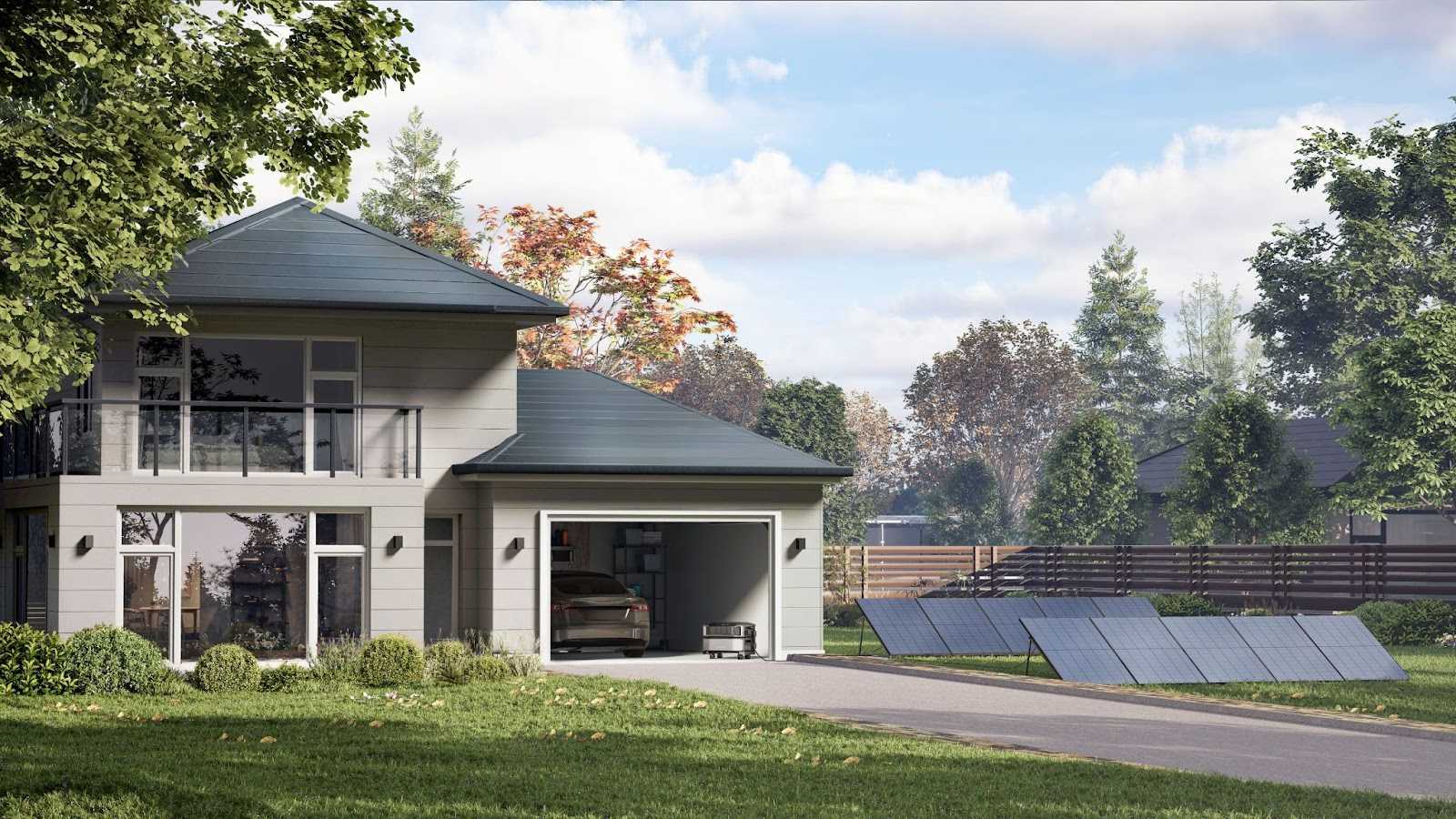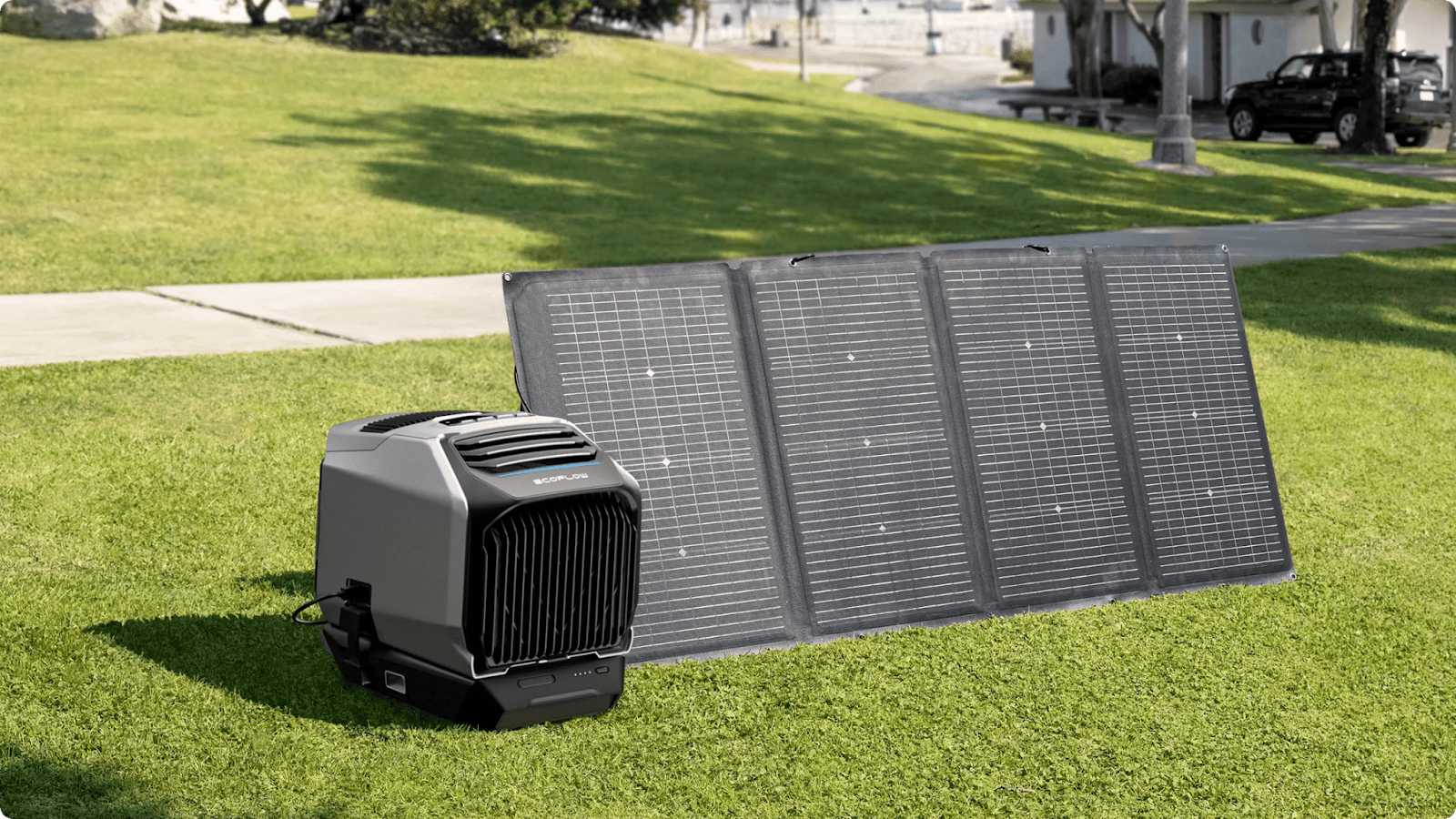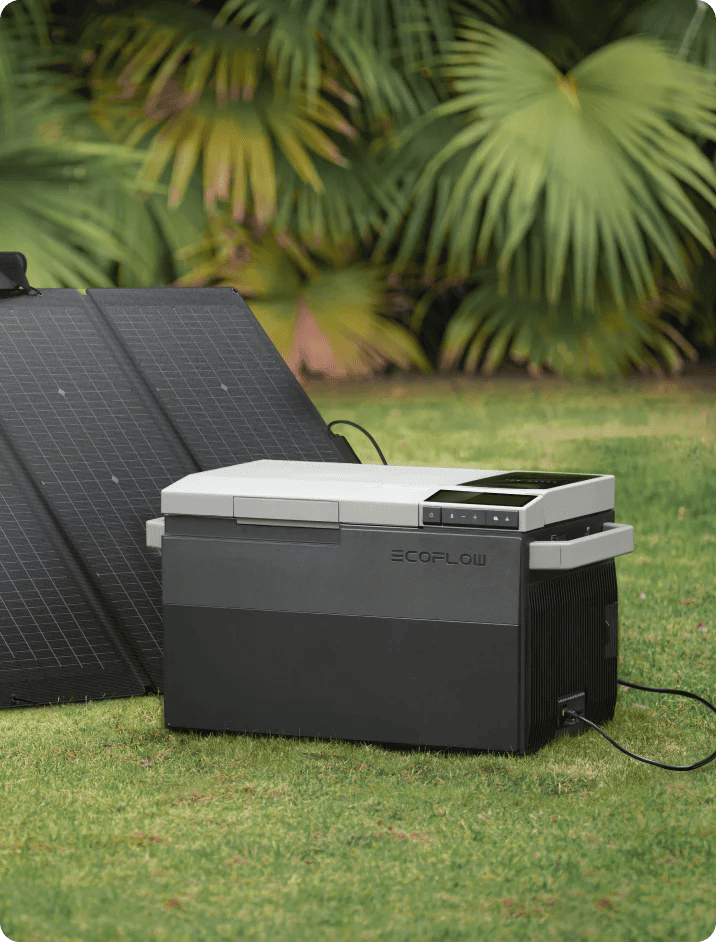What Are the Most Efficient Solar Products for Home Use?
The words “efficient” and “efficiency” are so commonly used that it’s easy to overlook their precise meaning. In many contexts, efficiency is mathematically defined, measuring mechanical, physical, or chemical phenomena.
We all strive to be more efficient, whether at work or in our personal lives.
According to Merriam-Webster, “efficient” describes something capable of producing desired results without wasting materials, time, or energy.
Efficiency applies differently to individuals, organizations, and machines—including solar products such as photovoltaic (PV) modules (like solar panels) and Smart Devices powered by solar-generated electricity.
Read on to learn more about solar product efficiency and the most efficient solar solutions for home use.
What Are the Most Efficient Solar Products for Home Use?
Products powered by solar energy, such as solar generators and Smart Devices, are often labeled as “energy-efficient.”
While PV systems can significantly reduce or even eliminate dependence on grid electricity, solar products are considered energy efficient because they generate power more sustainably than conventional methods like burning fossil fuels.
Since solar power is a clean, renewable energy source, it is inherently more energy-efficient because it produces electricity without depleting finite resources such as gas, oil, or coal.
According to EnergyStar, energy efficiency means “using less energy to achieve the same results—reducing energy bills and pollution in the process.” Solar products meet this definition because they generate electricity from sunlight without ongoing costs or greenhouse gas emissions.
However, the “efficiency” of solar products, similar to other machines like car engines or refrigerators, typically measures how effectively a device performs its primary function without energy waste.
For example, a vehicle’s fuel efficiency measures how much chemical energy is converted into kinetic energy when burning gasoline or diesel. You may recognize this concept as miles-per-gallon (mpg) or how far a vehicle can travel on a tank of fuel. Measuring the efficiency of a solar product depends on its primary function.
For instance, the energy efficiency of a solar refrigerator is evaluated based on how well it maintains a cold temperature relative to its power consumption. Among the most widely used solar products are photovoltaic modules, including solar generators, rooftop tiles, and shingles. Their primary function is to generate electricity by capturing sunlight and converting it into power.
So, how is solar panel efficiency measured?
What is Solar Panel Efficiency?
The efficiency of solar panels — and other photovoltaic modules that generate electricity from sunlight — is a specific measurement determined in a laboratory under Standard Test Conditions (STC).
| Condition Type | Standard Test Condition | Real-World Conditions |
|---|---|---|
| Solar Incident Angle | Always zero, irradiation beam always normal to the PV panel* | Variable, and depends on time, date, and site latitude. In the case of rooftop systems, roof orienta |
| Solar Irradiation | Always equal to 1000 Watts/m²* | Variable and depends on the time, date, and site latitude. Limited sunshine hours bound system capac |
| Ambient Temperature | Always 25°C* | Variable and depends on the time, date, weather condition, and site latitude. Higher ambient tempera |
| Air Mass Coefficient (AM) | Always equal to 1.5* | Variable and depends on the time, date, and site latitude. Higher AM with higher latitudes. |
| System Losses (e.g., Wiring, Inverter) | Always Zero* | Variable and depends on the design and location of PV panels, inverter, and grid meter. |
*Cannot be achieved in real operation (Source:ResearchGate)
Standard Test Conditions for Photovoltaic Modules
Efficiency measures the percentage of solar energy a PV module can convert into direct current (DC) electricity per square meter (m²) of photovoltaic cells under controlled conditions that simulate peak sunlight.
While STCs provide a standardized benchmark for performance, real-world efficiency varies due to environmental factors.
When selecting solar panels or other PV modules, efficiency is a crucial consideration. It determines how much electricity can be generated per square meter of photovoltaic material.
For rooftop installations, PV module efficiency helps determine the necessary surface area for sufficient power generation on an average day.
While multiple factors influence solar electricity generation, understanding solar panel efficiency is essential for making informed purchasing decisions.
Higher-efficiency portable solar panels require less installation space, potentially reducing the number of PV modules needed.
Most Efficient Solar Products of 2025
EcoFlow’s mountable and portable solar panels offer industry-leading efficiency ratings of up to 25%.
Efficiency is particularly important for applications with limited installation space or lower levels of solar irradiance.
Since all solar products rely on the efficiency of photovoltaic modules, we’ve outlined EcoFlow’s portable, rigid, and flexible solar panel efficiency ratings below.
Portable Solar Panels
| Product Name | EcoFlow 45W Portable Solar Panel | EcoFlow 160W Next-Gen Portable Solar Panel | EcoFlow 160W Next-Gen Portable Solar Panel |
|---|---|---|---|
| Rated Power | 45W | 110W | 160W (±5W) |
| Efficiency | 25% | 22.8% | 25% |
| Solar Cell Type | N-Type TOPCon Monocrystalline Silicon | 110W | N-Type TOPCon Monocrystalline Silicon |
Most Energy Efficient Types of Solar Products
Solar Panels
Devices powered by solar energy utilize photovoltaic cells, commonly known as solar cells, to generate electricity from sunlight.
Over 90% of today’s solar panels rely on crystalline silicon solar wafers as their primary semiconductor material for energy conversion. According to the International Energy Agency, crystalline silicon (c-Si) “remains the dominant technology for PV modules, with a market share of more than 97%.”
Other PV cell types in use include:
Passive Emitter and Rear Contact (PERC)
Thin Film
Perovskite
Monocrystalline silicon solar panels are the most efficient but are typically more expensive than polycrystalline panels with the same rated power output. For instance, the EcoFlow 175W Next-Gen Rigid Solar Panel boasts a 25% efficiency rating, whereas many 175W polycrystalline panels achieve only ~15% efficiency.
Depending on the application, you may require 67% more surface area and polycrystalline PV cells to generate the same amount of electricity from available sunlight. Balancing the long-term benefits of higher efficiency against the lower cost of less efficient solar panels is key to making the best investment decision.
Solar Generators
Solar generators provide a plug-and-play solution by integrating PV modules with the necessary system components for electricity generation, whether for home or portable use. Depending on whether you choose a grid-connected or off-grid/hybrid setup.
Pre-packaged solar generator systems, like EcoFlow’s DELTA Pro 3 with portable/mountable solar panels, eliminate compatibility concerns, reducing complexity and safety risks.
Solar generators enhance energy efficiency by cutting electricity consumption by up to 75% or even enabling complete off-grid independence. Efficiency applies primarily to the PV modules powering solar generators.
Solar Batteries
Because all renewable energy sources are intermittent, storage is essential unless you’re connected to the utility grid. Wind turbines don’t generate electricity on still days. Solar panels don’t work at night.
Grid-tied PV systems use PV modules and an inverter to supply your home with electricity during daylight hours and auto-switch to grid power at night or when consumption exceeds the supply from your solar panel array.
However, it’s essential to note… On-grid solar panel systems don’t work during a blackout. Grid-tied PV systems rely on a bi-directional connection that transmits and receives electricity from the grid.
During a power outage, grid-connected systems auto-shutdown to eliminate the possibility of injuring workers trying to restore electricity and further damage to infrastructure.
Being grid-connected can have advantages, such as participating in net metering programs — a billing mechanism that allows you to sell the electricity your system generates in excess of consumption back to the grid.
However, net metering isn’t available everywhere… And even if it is, you’ll typically pay a significantly higher price for the utility electricity you consume than the credits you earn from selling power to the grid.
Instead, consider taking measures to increase the self-consumption of solar power by storing the electricity generated in a solar battery and making your home more energy-efficient.
The EcoFlow OCEAN Pro is a high-capacity solar battery system designed for efficient solar power storage. With up to 80kWh of storage, it offers fast charging, robust weather resistance, and seamless integration with solar panels. It’s ideal for homes looking to maximize solar energy usage and reduce grid dependence, especially during power outages.
The federal government currently offers Efficient Home Improvement Credit, which offers a 30% federal income tax credit towards qualified expenses, including Qualified energy efficiency improvements installed during the taxable year residential energy property home energy audits.
According to the IRS, improvements covered by the credit include:
$2,000 per year towards qualified heat pumps, water heaters, biomass stoves, or biomass boilers$1,200 for energy-efficient property costs and certain energy-efficient home improvements, with limits on exterior doors ($250 per door and $500 total), exterior windows and skylights ($600), and home energy audits ($150). The maximum credit you can claim each year is $3,200, but there’s no limit to how many times you can claim it between now and 2033.


Hybrid solar power systems, like EcoFlow DELTA Pro Ultra, which provide solar power and storage, are eligible for the 30% solar tax credit.
The Residential Clean Energy Credit offers homeowners a credit for 30% of the total purchase and installation costs of eligible small wind, solar thermal , home battery backup, and solar photovoltaic systems against their federal income tax liability.
If the credit exceeds your tax liability for the year of purchase and installation, you can roll the balance over to the following years. Even if you don’t owe taxes, you may be able to collect the credit in the future.
Smart Devices
As photovoltaic cell efficiency and performance increase, more and more products are available that have all the necessary components to run on solar power built in.
For example, EcoFlow Glacier Portable Refrigerator offers the fastest cooling in the industry and can keep food and beverages cold for up to 40 hours without recharging. It even makes ice!
EcoFlow WAVE 3 is a portable air conditioner/space heater that can cool or heat a space by 18°F in 5 minutes. It has 5100 BTUs of cooling and 6100 BTUs of heating power. Both EcoFlow WAVE and Glacier are highly efficient Smart Devices that support direct solar panel charging. You can even wear solar power now!
EcoFlow Power Hat offers UPF50+ sun protection from UV rays and heat. It can recharge your phone in as little as two hours of direct sunlight. It even has dual ports for charging two devices at once. Like all EcoFlow solar products, the Power Hat uses high-performance monocrystalline solar cells with an efficiency rating of 23-24%.


What Factors Determine the Efficiency of Solar Products?
The primary factor determining the efficiency of solar products is the type of photovoltaic cells used to generate electricity from sunlight… But numerous other factors affect both efficiency and performance.
If you want a pro-level understanding of solar panel efficiency, you must understand the difference between efficiency and performance regarding how much electricity a PV module will generate. For example, the 23% efficiency rating of an EcoFlow 400W portable solar panel doesn’t change at night, but it won’t generate any power without sunlight.
With that in mind, here are the main factors that impact the energy efficiency and performance of photovoltaic modules, such as solar panels and products with direct solar charging capabilities.
Sunlight Exposure
The amount of direct sunlight — technically known as solar irradiance — a PV module receives doesn’t affect its efficiency… However, it’s the primary factor in determining a solar product’s performance.
Because efficiency is determined in a lab under ideal conditions, a solar panel’s efficiency rating doesn’t change, even when it’s pitch dark. But solar products can’t generate any electricity at all without visible light.
Along with ultraviolet (UV) and infrared (IR), visible light makes up a significant proportion of the solar spectrum— the lightwave energy from the sun that reaches the Earth.
Solar products can generate electricity from any visible light — including moonlight, street lamps, and artificial light from incandescent, fluorescent, and LED light sources. Small solar products like LCD calculators can operate on artificial light alone.
But PV modules — like solar panels — require high-intensity sunlight to generate sufficient electricity to make them practical for high-wattage applications. The peak sunlight hours your solar product receives are the number one determiner — not of efficiency — but of performance.
Monocrystalline or Polycrystalline?
Most solar products rely on pure monocrystalline or polycrystalline solar cells to generate electricity using the photovoltaic effect. Other PV cells are available or in development, but are largely unsuitable for portable or residential use.
Polycrystalline solar products tend to be cheaper but far less efficient than monocrystalline PV modules. Any savings you get on the sticker price will likely be outweighed by inferior efficiency and performance over the mid to long-term.
Monocrystalline solar panels achieve efficiency ratings of up to 25% and can help you achieve solar payback more quickly. The more electricity your solar products can generate from available sunlight, the greater your return on investment(ROI)over time.
Direction, Angle, and Tilt
Where and how you position your solar panels and products also has a significant impact on performance. In the northern hemisphere, PV modules should ideally face south during peak sun hours to maximize exposure to direct sunlight.
Positioning solar panels to optimize performance is an art in itself, which is why many homeowners choose to work with a reputable installer to mount their PV modules, particularly for fixed rooftop PV arrays.
If you’re using portable solar panels, you can easily change the direction, angle, and tilt of the unit to maximize sun exposure throughout the day.
Temperature
It may be surprising but solar panel efficiency actually declines in extreme heat. Solar farms in locations that get extreme amounts of direct sunlight — like in a desert — actually have cooling systems to reduce the temperature of solar panels to optimize efficiency.
The ideal ambient temperature for solar panels is 25°C (77°F), but efficiency isn’t noticeably impacted by temperatures between 59°F and 95°F. Solar panels perform well in cold and heat, although efficiency decreases at extremes.
Age
Considering the direct exposure to extreme weather that solar panels must endure in order to function, they’re surprisingly durable. High-quality solar panels with an IP68 rating can last for 25 years or more without requiring replacement. For reference, that’s longer-lasting than most home roofs.
However, photovoltaic cells do experience a minimal decrease in efficiency over time — approximately 0.5% or less a year — barely noticeable for decades or more.


Final Thoughts
From Smart Devices to solar generators,home battery, now is the perfect time to harness the sun’s unlimited, clean energy.
While a 25% efficiency rating for solar panels may seem low, it represents a distinct property of photovoltaic modules, differing from appliance or vehicle energy efficiency.
Explore EcoFlow’s diverse range of solar products for both residential and portable applications today. Whether you're looking for efficient solar panels, a powerful solar generator, or a home battery like the EcoFlow OCEAN Pro to store your solar energy, EcoFlow offers cutting-edge solutions designed to help you reduce your energy costs, increase your self-sufficiency, and protect your home from power outages.